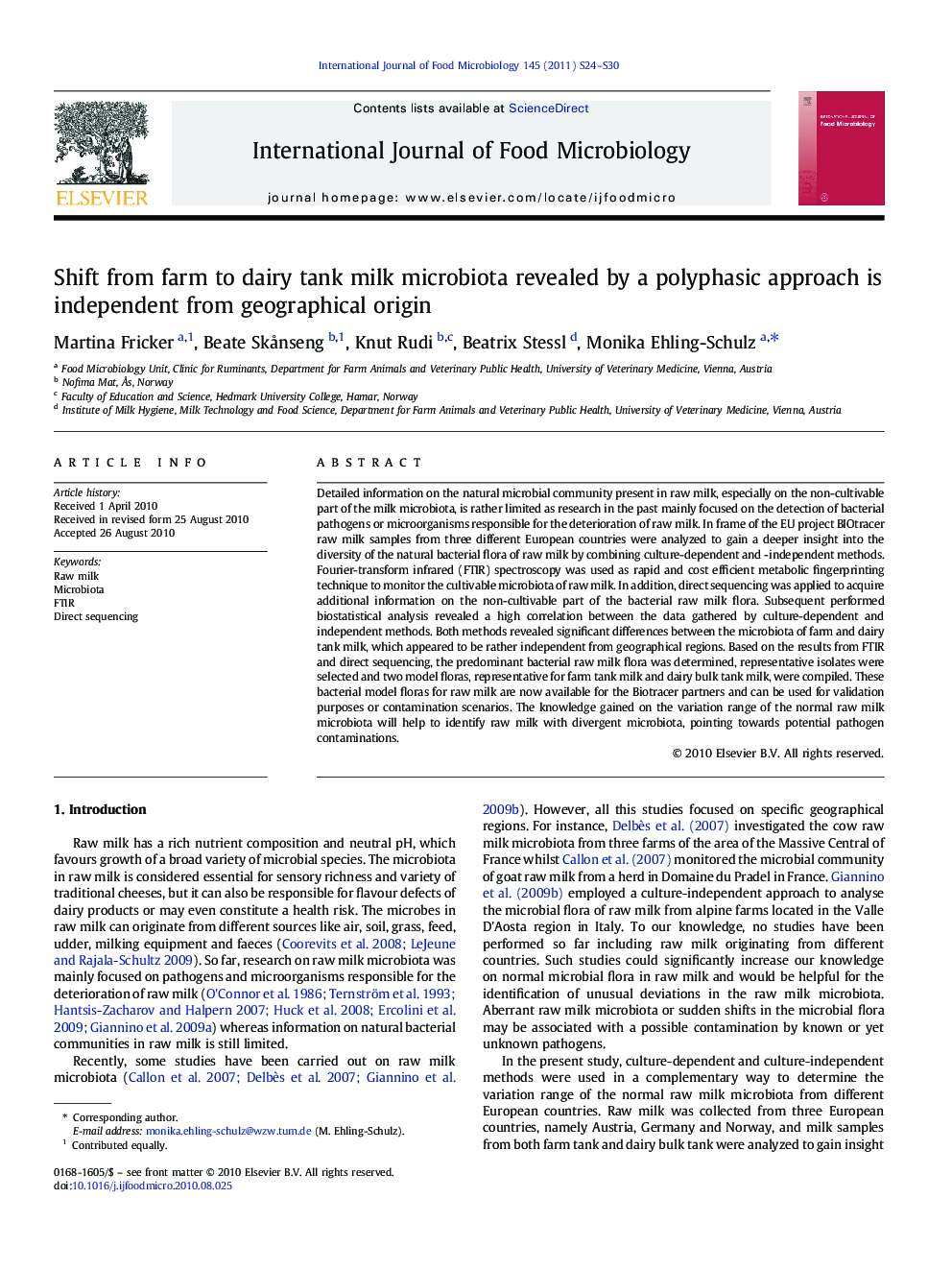| Article ID | Journal | Published Year | Pages | File Type |
|---|---|---|---|---|
| 4367871 | International Journal of Food Microbiology | 2011 | 7 Pages |
Detailed information on the natural microbial community present in raw milk, especially on the non-cultivable part of the milk microbiota, is rather limited as research in the past mainly focused on the detection of bacterial pathogens or microorganisms responsible for the deterioration of raw milk. In frame of the EU project BIOtracer raw milk samples from three different European countries were analyzed to gain a deeper insight into the diversity of the natural bacterial flora of raw milk by combining culture-dependent and -independent methods.Fourier-transform infrared (FTIR) spectroscopy was used as rapid and cost efficient metabolic fingerprinting technique to monitor the cultivable microbiota of raw milk. In addition, direct sequencing was applied to acquire additional information on the non-cultivable part of the bacterial raw milk flora. Subsequent performed biostatistical analysis revealed a high correlation between the data gathered by culture-dependent and independent methods. Both methods revealed significant differences between the microbiota of farm and dairy tank milk, which appeared to be rather independent from geographical regions. Based on the results from FTIR and direct sequencing, the predominant bacterial raw milk flora was determined, representative isolates were selected and two model floras, representative for farm tank milk and dairy bulk tank milk, were compiled. These bacterial model floras for raw milk are now available for the Biotracer partners and can be used for validation purposes or contamination scenarios. The knowledge gained on the variation range of the normal raw milk microbiota will help to identify raw milk with divergent microbiota, pointing towards potential pathogen contaminations.
